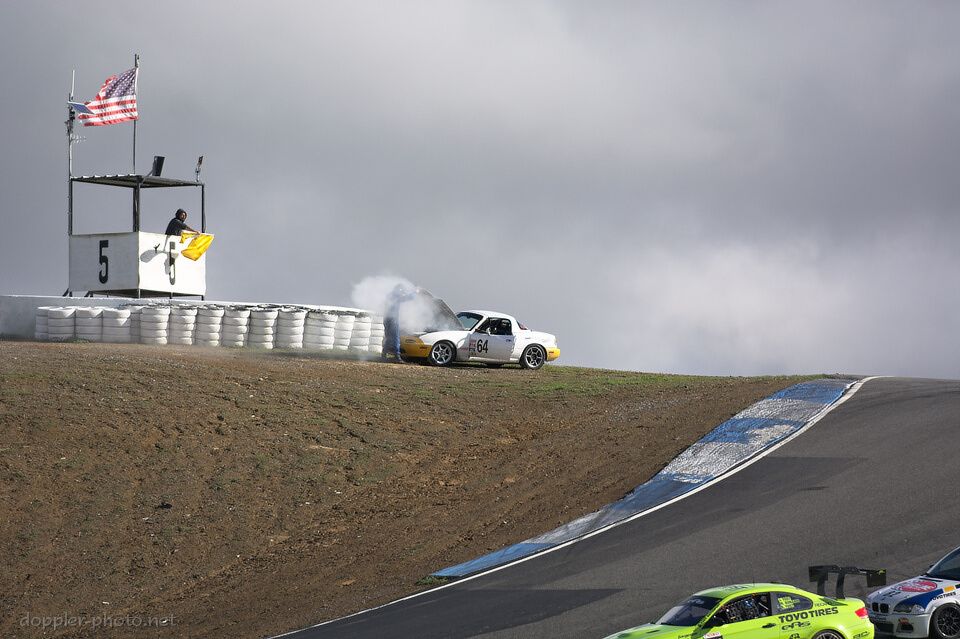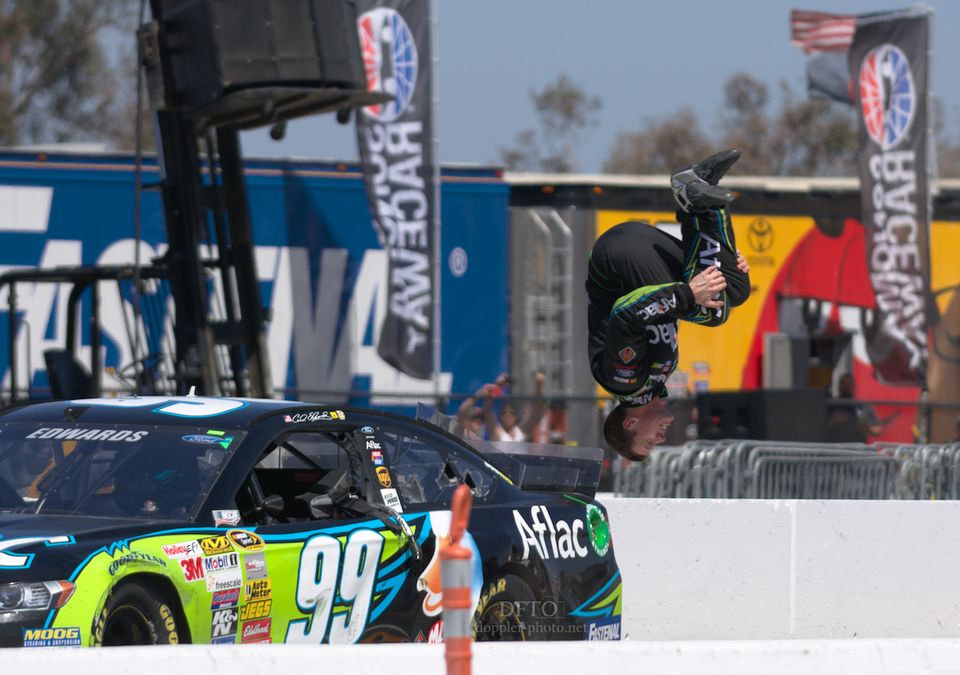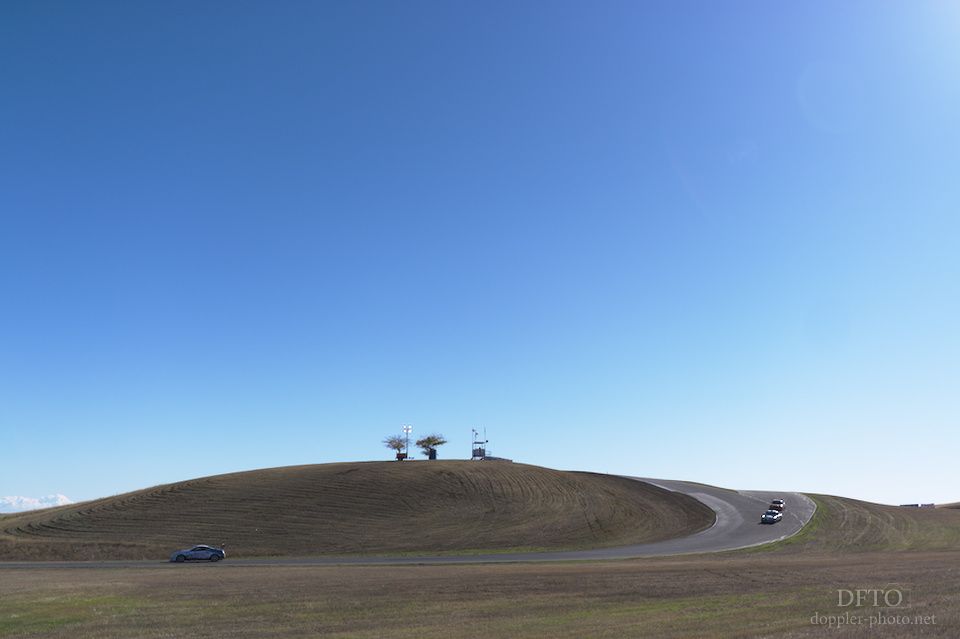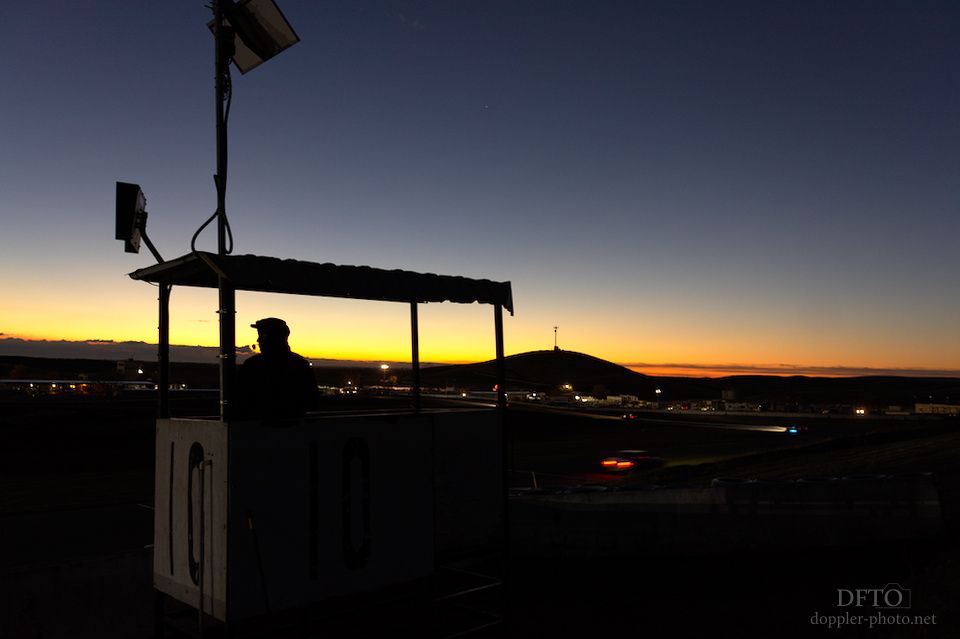
(Note: this post follows "Stop and Go, Mostly Go" in the Rhythm of Racing series.)
First, it breaks…The last post discussed the idea of a clean race, where everything goes perfectly, nothing breaks, the car never goes off track, and so on. That mostly doesn't happen. What's more likely is that you'll be racing along, and then suddenly you see a cloud of steam as the temperature gauge shoots for the moon. Time to pull off-track and wait for a tow.
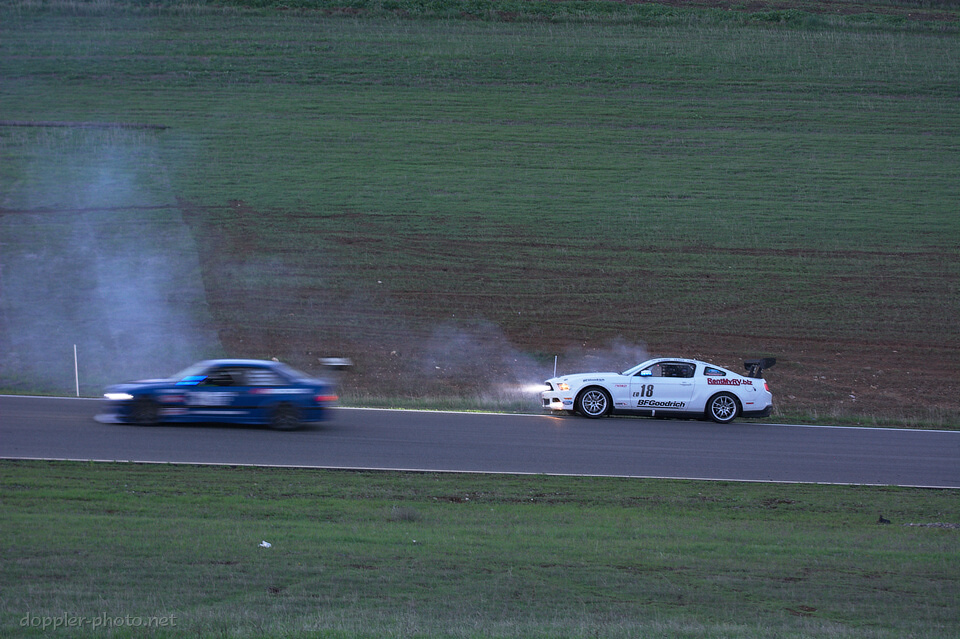
Maybe you're in the groove heading toward turn 8, when BANG! Suddenly you have a see-through engine. The giant puff of smoke makes it seem like a magic trick, sometimes, but the punchline is always sad. And if you don't have a spare, then that's how the story ends. First with a bang, and then a whimper.
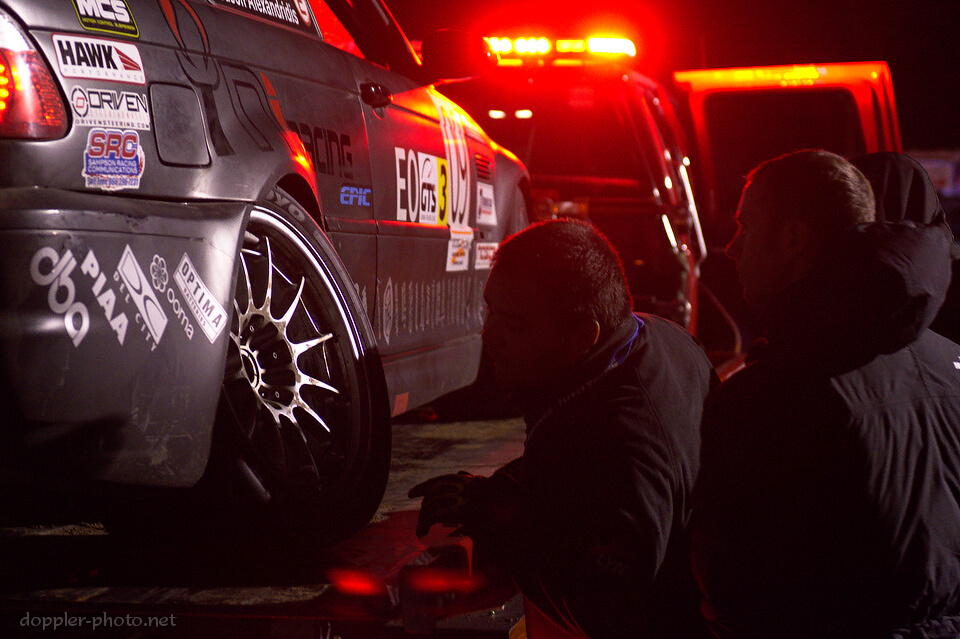
Sometimes your wheel comes off. Maybe a bump or jostle earlier in the race had a delayed effect. Maybe the driver went off-track, the wheel got sucked into a mud puddle, and the rest of the car kept going. Maybe the part was poorly-designed, or had a manufacturing defect. Whatever the reason, it's not fun, but it's generally fixable.
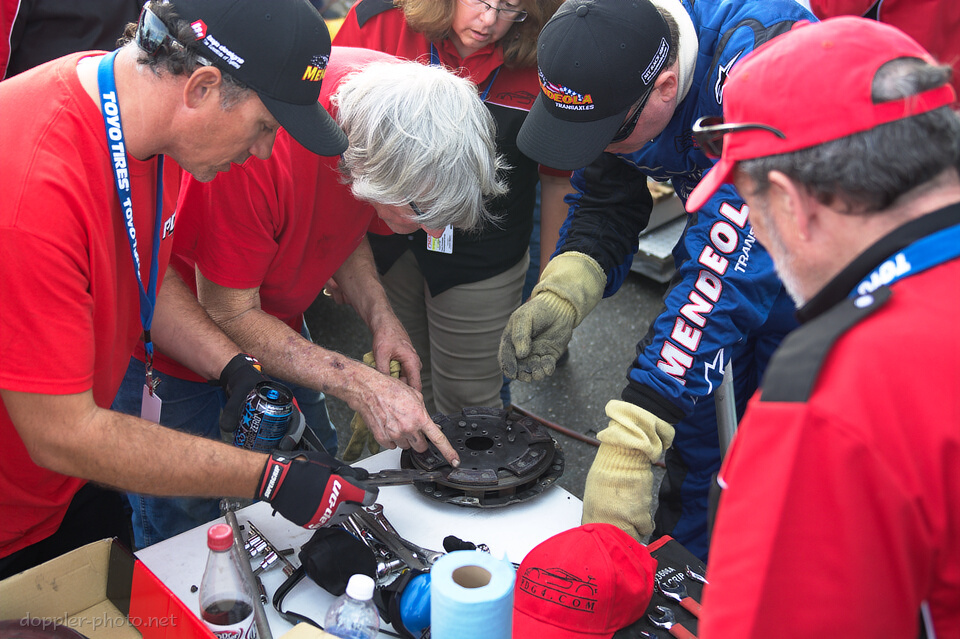
First it breaks, then ya fix it…I love endurance races in part because the teams have time to encounter problems, fix them, and get back on their way. Things can go wrong and then go right in the same race, and there's always some light at the end of the tunnel.
In this case, the Prototype Development Group #4 car (the same one that was rebuilt after bursting into flames during the prior year's race) ran into a situation where an errant bolt caused the unexpected disassembly of their clutch plate. In the photo, the team examines the deconstructed clutch, as well as a damaged spare, which showed evidence of the same kind of problem.
In the spirit of endurance racing, the team threw the spare in, crossed their fingers, and hoped for the best.

The Twini — a twin-engine Mini Cooper — had a recurring issue where oil would get past some gaskets and end up in the spark plug wells of the front engine. In the photo, a team-member uses a hammer and an upside-down socket to re-install one of the spark plug wells after another a teammate had coated the bottom end in silicone gasket-maker. This wasn't the last time the team would pore over one of their engines, and they would end the race many laps down on their competitors, but still managed to roll across the finish.
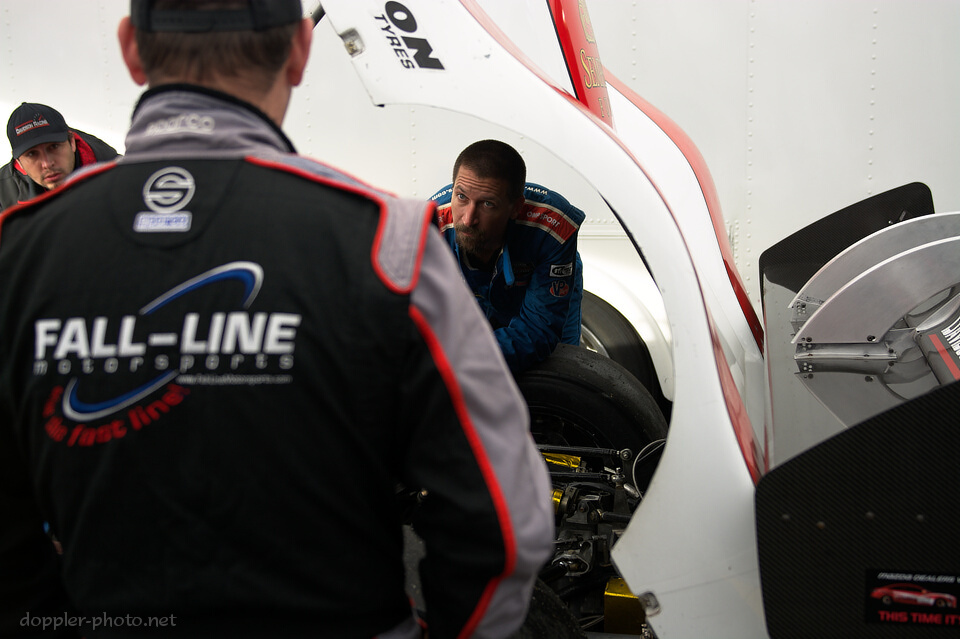
The #17 Davidson Racing Eagle, sister car of the winning #16, had no such luck. After multiple paddock stops for recurring electrical issues, and hours of discussions and diagnostics, the team retired the car and focused their efforts on the #16.

…Then ya get back out thereEvery team has a routine for getting back on track, and they're also interesting to watch. The switch from the exploratory "diagnostics and repair" mode to the "get back on track" process is somewhat similar to a musician transitioning from an improvised solo back to the sheet music.
At first, the teams are improvising left and right as they try to fix whatever needs fixing. Then you start to see inklings of pre-planned order, even before the resolution is complete. The driver gets back in the car (if they ever got out); the engine starts; the car is dropped back on the ground. Strewn tools are moved to make a path. A crew member stands next to any removed bodywork, waiting for a signal.
With an engine problem, the bodywork is always last. For the JFC Racing #52 car in the photograph, the bodywork pieces attach with small spring-clips, which are fastened into place with a screwdriver, and the reattachment itself is a frequently-rehearsed procedure. The more automatic each step in the transition becomes, the easier it is to move that step around in the resolution process.

For a street-style car with a hinged hood, like this Grip Racing #95 BMW 330i, the hood closes and then is fastened using hood pins (red) with a flip-up actuator lever (black, attached to the hood).
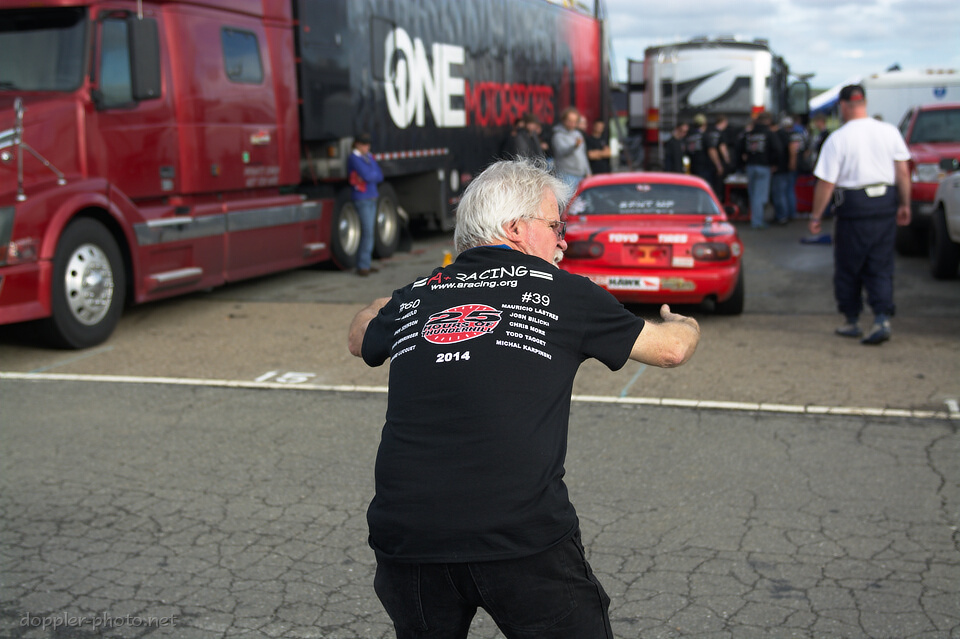
As the final bodywork is still being installed, a team member runs out to block traffic. Having the driver back into something or someone would be a disaster, and the faster they can get out of the paddock space, the faster they can get back on track.
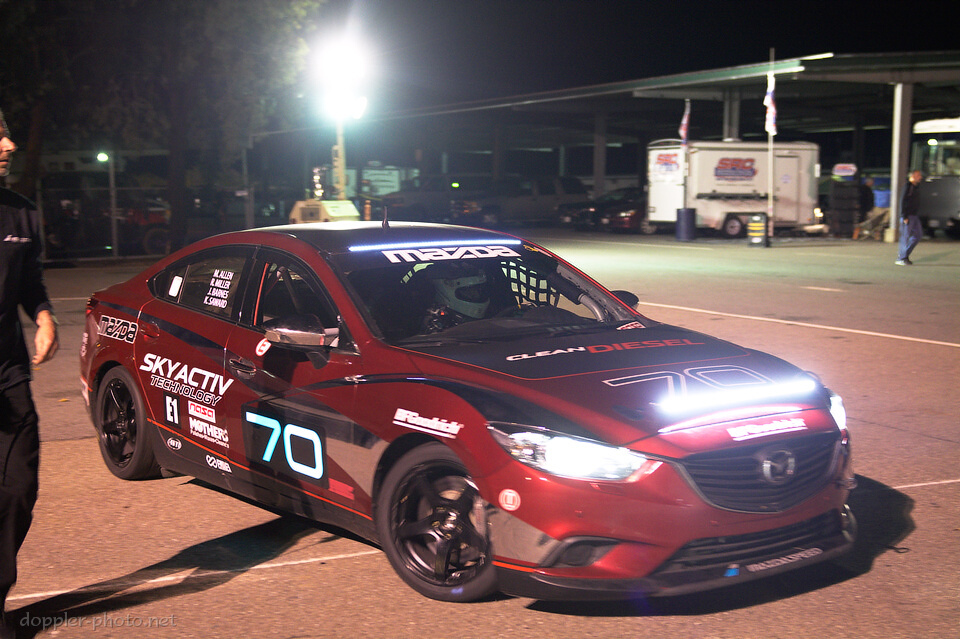
And finally, away! The resolution is complete. The full Rhythm of Racing sequence:
- Part 1: Morning
- Part 2: On-Track Prep
- Part 3: Stop and Go, Mostly Go
- Part 4: Break. Fix. Repeat.
- Part 5: Disaster
- Part 6: Reunion

